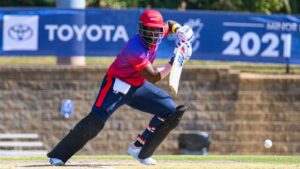Steve Steinberg of CricAmerica is back with a brand new series, sharing insights on the statistics behind cricket. So buckle up, here is part one of Cricket Stats 101…
Americans love sports stats. We start the year obsessing over NBA and NCAA assists, steals, and field goal percentages and NHL penalty-kill numbers. It continues through the spring and summer with MLB earned run averages, slugging percentages, and strike-out-to-walk ratios. And ends with yards-per-carry, touchdown-to-interception ratios, and third-down-efficiency numbers of our favorite NFL and college football players and teams.
Cricket, thankfully, has just as deep a reliance on — and appreciation for — numbers, equations, and analysis as anything you’re already watching. So, if you’re looking for a new sport to unleash your inner Bill James on, you’ve come to the right place. (And, unlike the other sports mentioned above, cricket is played 12 months out of the year, so you can worry about things like runs-per-over all year long!)
In this first piece, I’ll look at batting statistics. I’ll first give an overview of the main stats that teams, players, and fans concern themselves with and then look at which statistics are the most relevant for the different formats of the game — T20, ODI, and Test cricket. It’ll help you better understand and enjoy the game and make you a force to be reckoned with in your fantasy cricket leagues.

The most basic way to compare one player to another would be to look at the total number of runs that they’ve scored over the course of a season or tournament. This becomes muddy, though, when you have players who’ve played different numbers of innings or games due to injury, team strategy, or any variety of other factors. The sport needed an equation or statistic that would allow folks to compare apples and oranges in a logical and meaningful way.
If we go back 40-plus years to the days when there was only multi-day Test cricket, the main stat that people focused on for batters was Batting Average — the total numbers of runs scored divided by the number of times a batter is out. It’s essentially the number of runs scored per wicket lost by the batter. The highest career average is legendary Australian batsman Don Bradman’s 99.94. (For comparison, the highest Test average for a current player is Steve Smith’s still otherworldly 61.80.) In general, a career Test average of 40 is considered very strong and an average of 50 gets you into the game’s elite players. For the most part, Batting Average is a solid way to not only compare batters from different teams but also — as the sport’s obsession with Bradman’s 99.94 shows — a way to compare players from different eras.
The growth of limited overs games — 50 over ODIs and 20 over T20 matches — has changed the way the game looks at batting stats. It’s no longer good enough to average 30 or 40 or even 50 runs per match; it’s now just as important — if not more important — to score runs quickly. It’s great to average 30 runs per innings, but if it takes you 60 balls to score that 30, you’re not going to be too helpful to a T20 lineup that’s only going to face 120 balls. (Another issue with Batting Average and limited overs games is that you have a lot of lower order batters that score runs at the end of an innings without being put out. They may end up accumulating a lot of runs over the course of a season or tournament without losing many wickets. As a result, they end up with an overly inflated Batting Average that’s not really representative of their skills.)
For limited overs games — especially T20 matches like those played in Minor League Cricket and eventually in Major League Cricket in this country — a different metric is used to see not only who can put up big numbers, but who can put them up in the shortest amount of time. Strike Rate measures how many runs per 100 balls a player accumulates — total runs divided by total balls faced multiplied by 100.

Putting up runs quickly is the key to success in shorter formats of the game. “If you’re batting slowly, you’re using up your team’s resources,” according to Major League Cricket’s stats guru Tom Nielson. “Batting a long time at a below average strike rate will lead to below average scores.” In Test cricket, wickets are more valuable than balls because you can bat for days. In shorter formats of the game, balls are more valuable than wickets because you only get a limited number of them. And in T20, that number is the most limited. Every ball is important when your team only gets a crack at 120 of them.
So, what’s a good T20 Strike Rate? Let’s look at some numbers. If the typical T20 score is around 150 for 120 balls, that averages out to 1.25 runs per ball. If a team can average more than 1.25 per ball, they’ll score higher than 150. To do this, teams need some run scorers with Strike Rates above 125. The best in the T20 game consistently have strike rates in the 150s or above. And for the game’s greats, the sky is the limit. Andre Russell led the IPL in 2019 with a SR of 204.81. For perspective, Ryan Scott dominated this past season at the crease in Minor League Cricket scoring 446 regular season runs at a rate of 181.30.
All stats are not created equal. And when it comes to cricket, not all stats carry the same weight. Depending on what format of the game is being played, some stats are more telling than others. If you’re looking for the best batters in Test cricket, Runs and Batting Average are where you should be focusing. For limited overs matches — like the T20 played in Minor League Cricket — keep an eye on Runs, but your attention should be on Strike Rate.
(And if you want to get into some serious advanced math, check out Tom Nielson’s Player Impact Rankings!)

